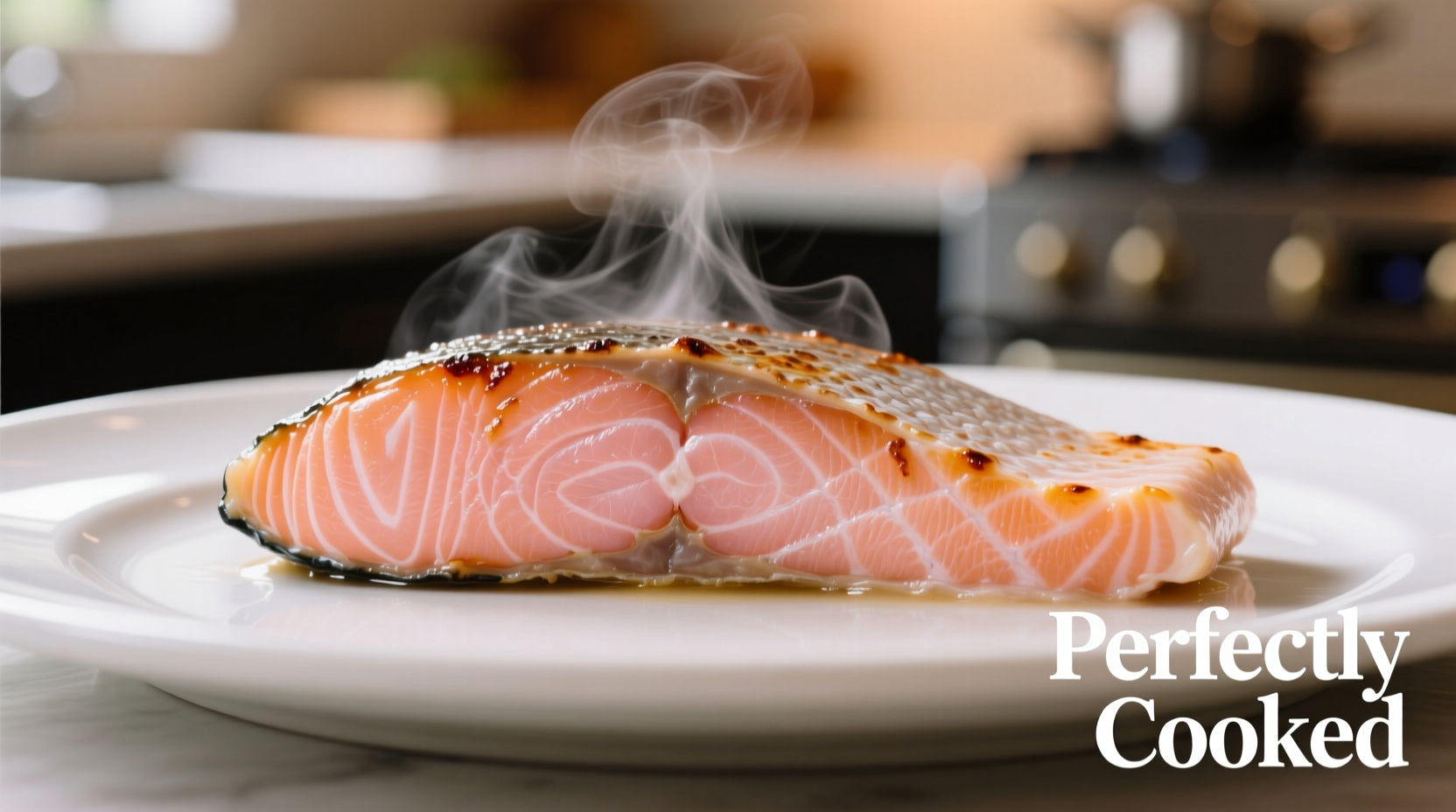Getting salmon doneness right separates good cooks from great ones. Undercooked salmon risks Salmonella and Vibrio infections, while overcooked fish becomes dry and loses its delicate flavor. Based on FDA food safety standards and culinary science, we'll show you exactly how to identify perfect doneness using accessible techniques—no professional equipment required. Whether you're baking, pan-searing, or grilling, these methods work for all salmon types including wild-caught and farmed varieties.
Why Precise Doneness Matters Beyond Temperature
Salmon's high fat content makes it forgiving, but improper cooking creates two critical issues:
- Food safety hazard: Raw salmon may contain parasites like Anisakis that require proper cooking to eliminate (FDA Food Code 2022, Section 3-401.11)
- Texture destruction: Exceeding 145°F causes proteins to contract excessively, squeezing out moisture and creating chalky results
Professional chefs use multiple verification methods because single indicators can mislead. A fillet might look done but remain unsafe internally, or feel firm while actually being perfectly cooked. Context matters significantly based on your cooking method and salmon thickness.
5 Foolproof Methods to Verify Salmon Doneness
| Method | How to Execute | When to Use | Limitations |
|---|---|---|---|
| Food Thermometer | Insert probe into thickest part; wait 10 seconds for reading | All cooking methods (essential for food safety) | Requires proper calibration; avoid bone contact |
| Flakiness Test | Gently press fork tines into center; should separate into clean flakes | Baking, grilling, poaching | Unreliable for very thin fillets (<1 inch) |
| Color Change | Translucent red turns opaque pink; center matches outer edges | Pan-searing, broiling | Tricky with smoked or marinated salmon |
| Touch Test | Compare firmness to base of thumb: rare=soft (thumb+index), medium=firm (thumb+middle), well=very firm (thumb+ring) | Grilling, pan-frying | Requires practice; subjective for beginners |
| Shrinkage Observation | Fish reduces 20-25% in size; edges curl slightly | All methods (secondary indicator) | Varies by fat content; not standalone proof |
Thermometer Method: The Gold Standard
For absolute safety, the USDA Food Safety and Inspection Service mandates 145°F (63°C) internal temperature for all fish. Here's how to implement it correctly:
- Use an instant-read thermometer (tested against ice water for accuracy)
- Insert probe horizontally into the thickest part, avoiding bones
- Remove salmon at 140°F—residual heat will carry it to 145°F during 5-minute rest
This method resolves the most common mistake home cooks make: relying solely on cooking time. As the FDA emphasizes, "cooking times vary based on thickness, starting temperature, and equipment." A 1-inch fillet might take 12 minutes at 400°F, while a 2-inch steak requires 18 minutes.
Avoiding Critical Context Errors
Many doneness guides fail to address situational variables that cause misjudgment:
- Wild vs. farmed salmon: Wild varieties (like Sockeye) have less fat and cook faster—remove at 140°F to prevent dryness
- Skin-on cooking: Skin insulates the flesh; add 2-3 minutes to cooking time before checking
- Residual cooking: Salmon continues cooking off-heat; always rest 5 minutes covered before final assessment
- Cold-start error: Refrigerated salmon needs 3-5 extra minutes versus room-temperature fish
When grilling over direct flame, the exterior may char before the center reaches safe temperature. Always verify with a thermometer rather than visual cues alone. For sous vide cooking, maintain 115-125°F for medium-rare (requires freezing first to kill parasites per FDA guidelines).
Pro Tips for Perfect Results Every Time
Implement these chef-tested techniques to elevate your salmon:
- Preheat your pan: A properly heated skillet creates instant sear that locks in juices
- Pat dry thoroughly: Moisture steams instead of sears—use paper towels for crisp skin
- Check early and often: Start testing 3 minutes before expected finish time
- Rest properly: Tent loosely with foil; resting redistributes juices for tender results
When in doubt, undercook slightly—you can always return salmon to heat, but dry fish can't be rescued. Remember that carryover cooking adds 5-10°F during resting, so timing removal correctly is crucial.

Final Verification Checklist
Before serving, confirm these three signs simultaneously:
- Internal temperature at 145°F (63°C) in thickest part
- Flesh separates easily along natural lines when tested with fork
- No translucent areas remain in center (uniform opaque color)
If any indicator is missing, return to heat for 60-90 seconds and recheck. This multi-method approach prevents the most common error where salmon looks done but remains unsafe internally—a critical food safety concern documented by the CDC in seafood-related illness reports.











 浙公网安备
33010002000092号
浙公网安备
33010002000092号 浙B2-20120091-4
浙B2-20120091-4